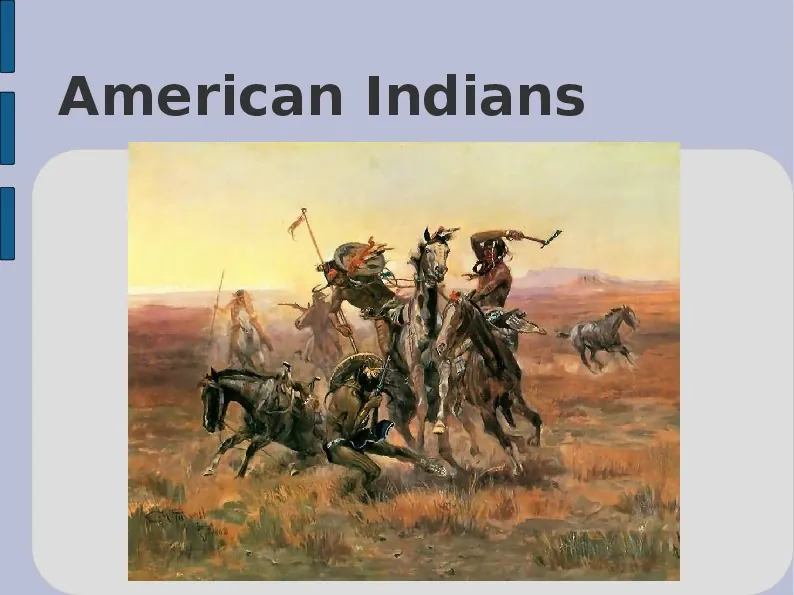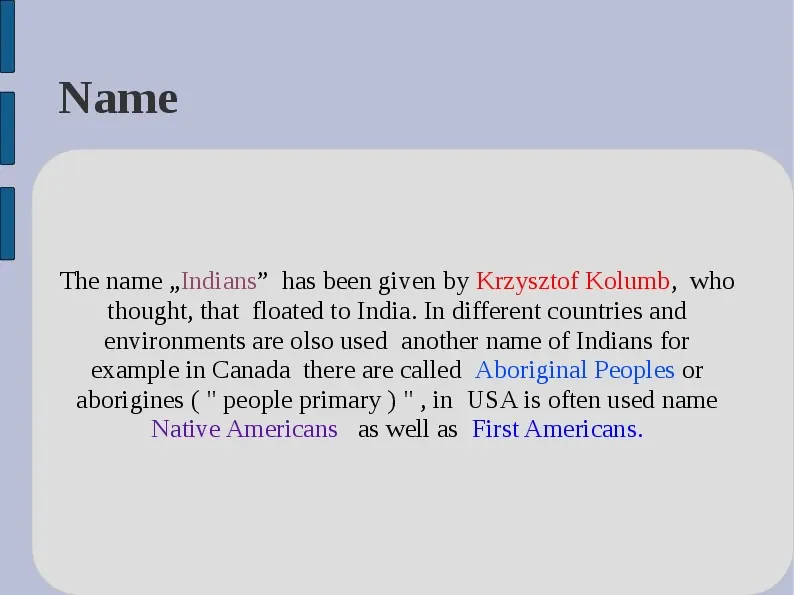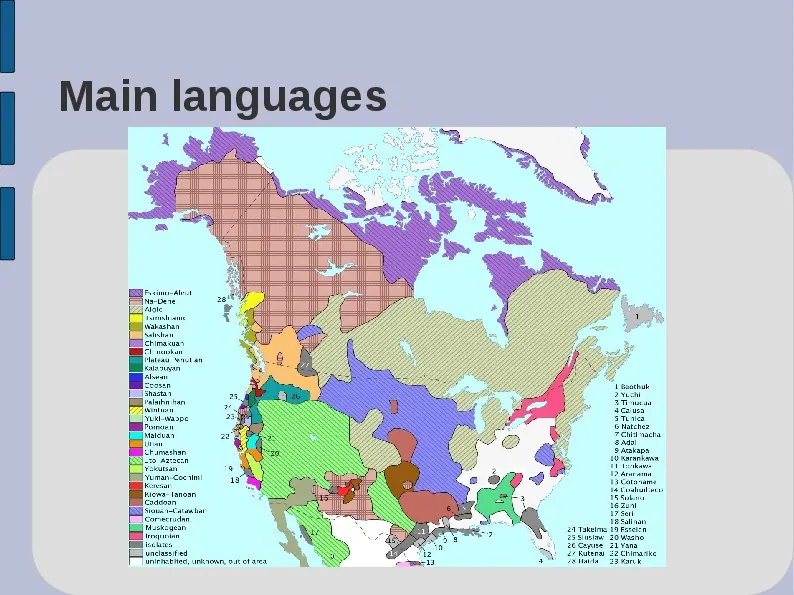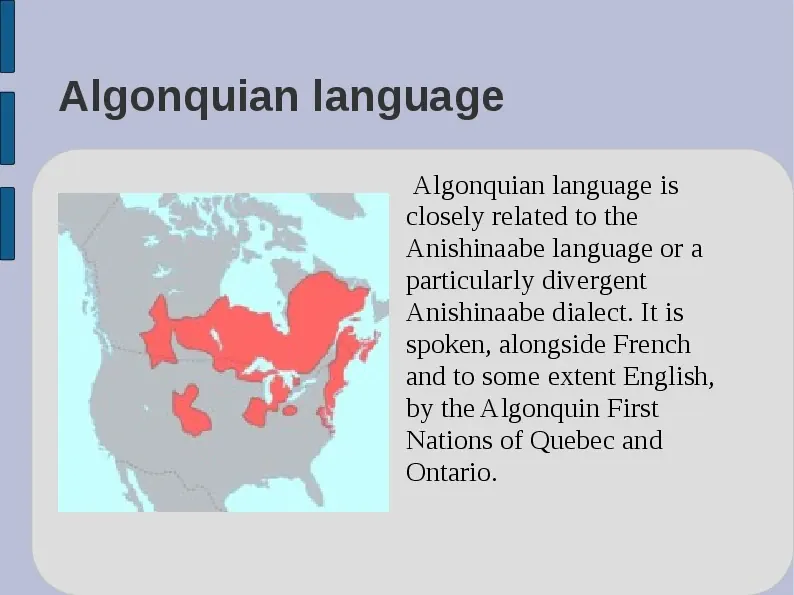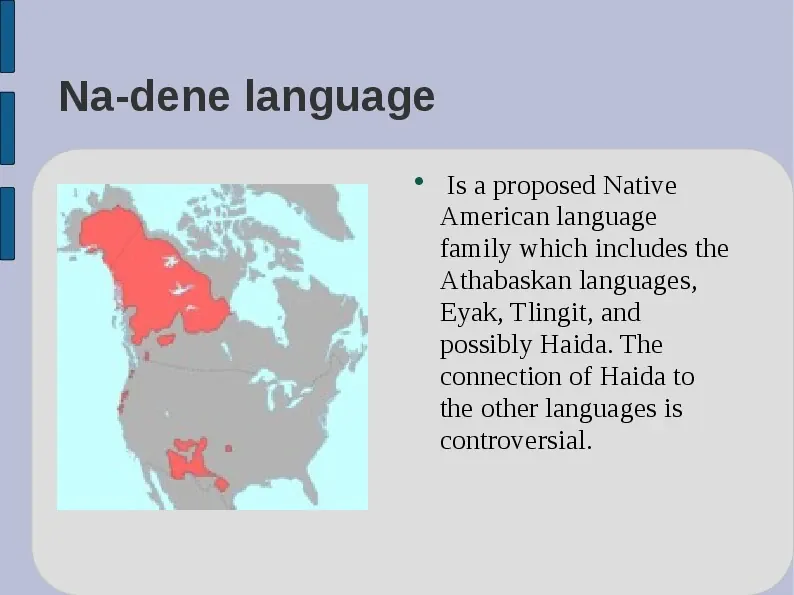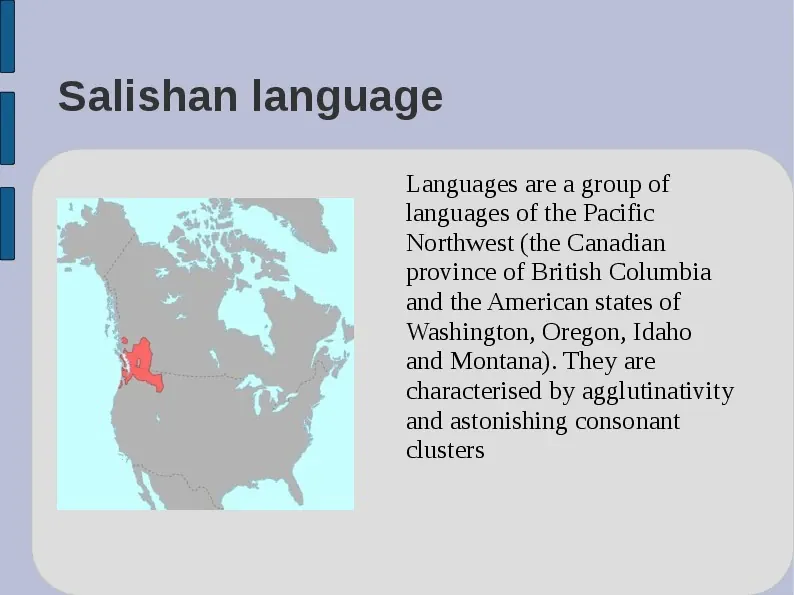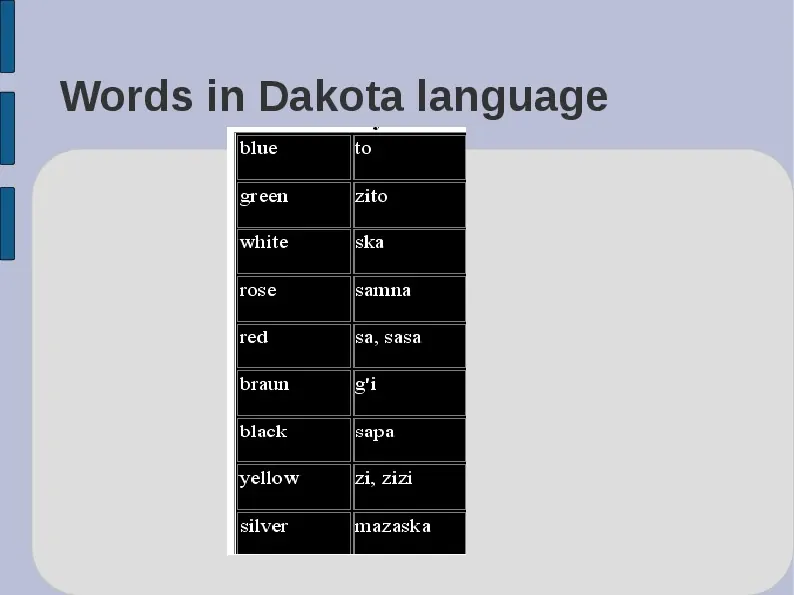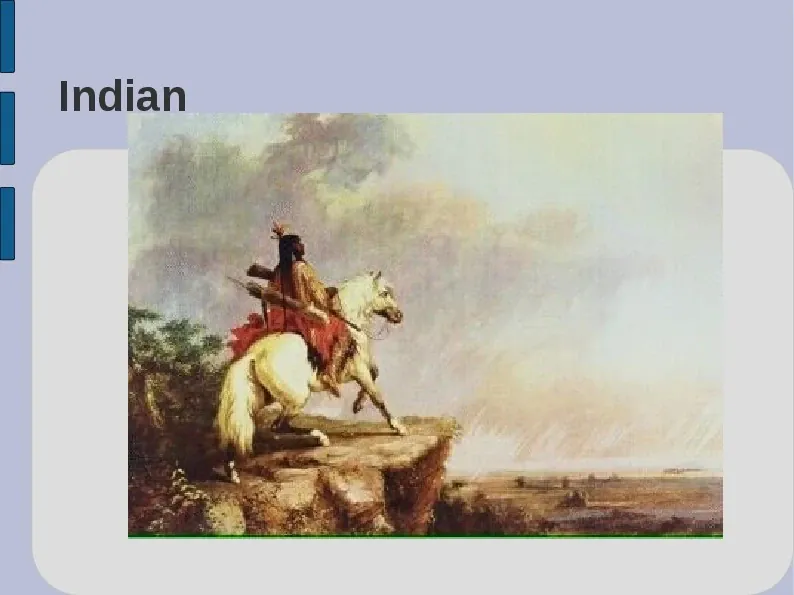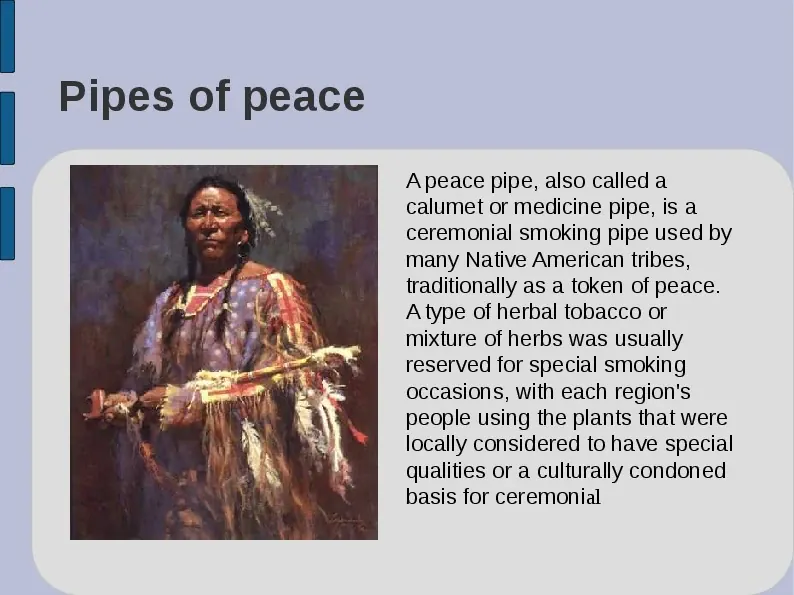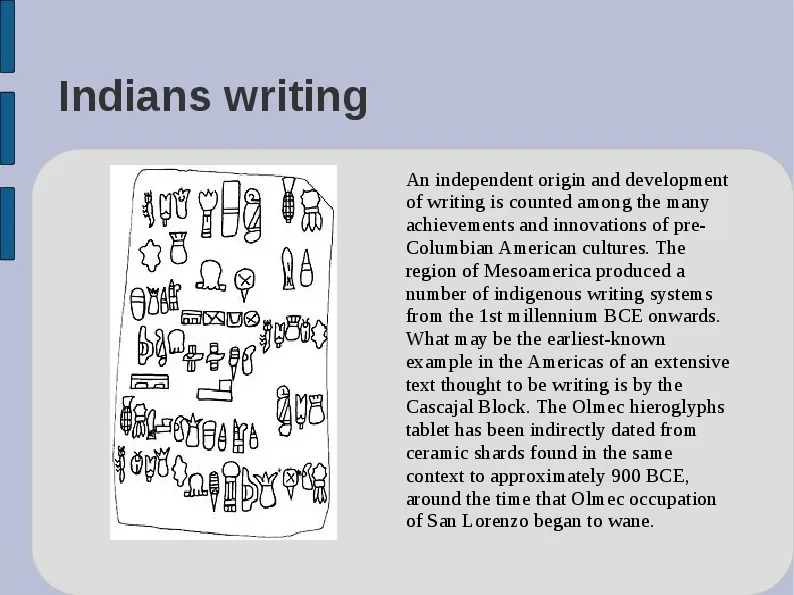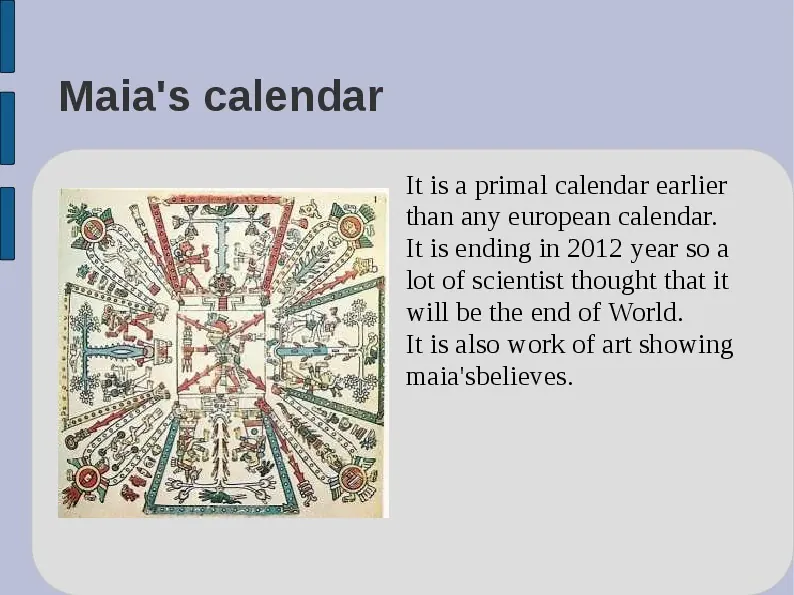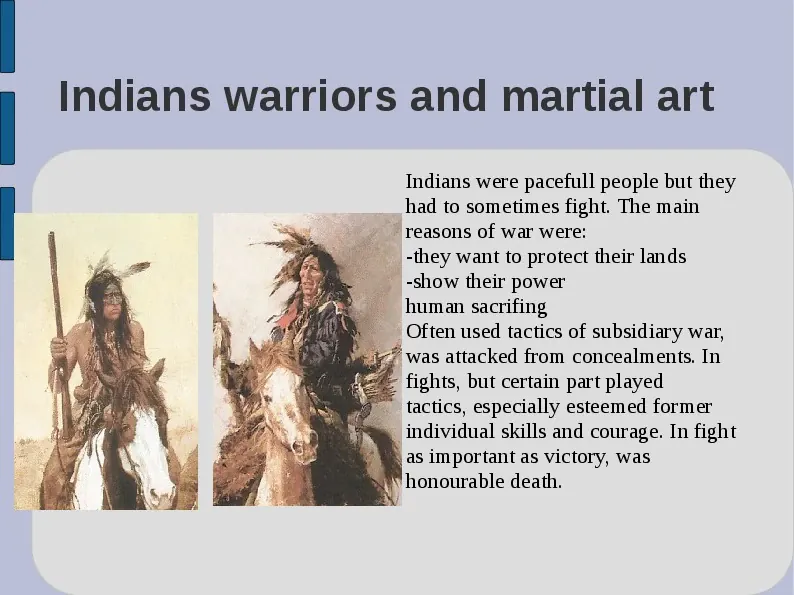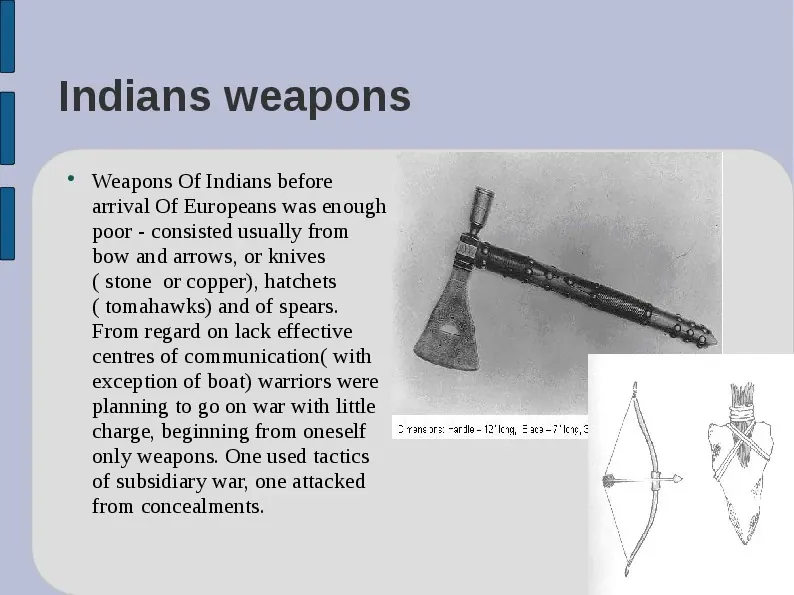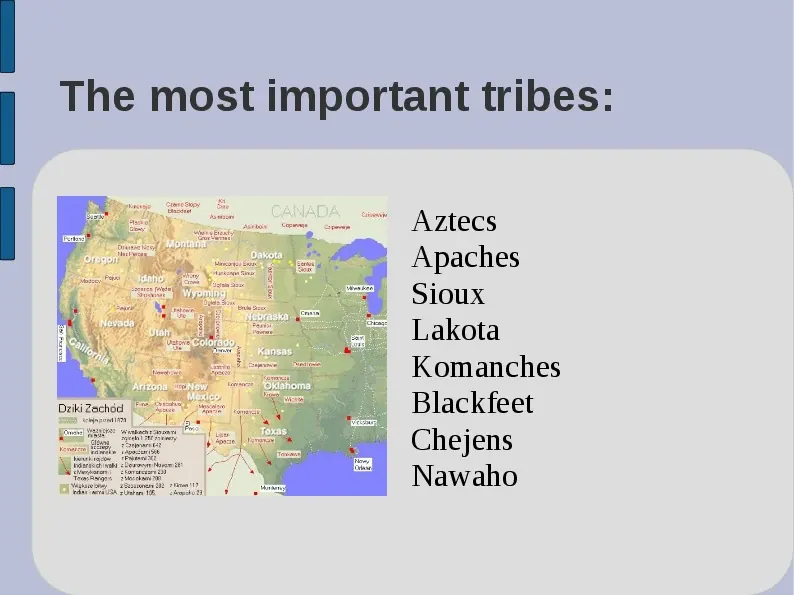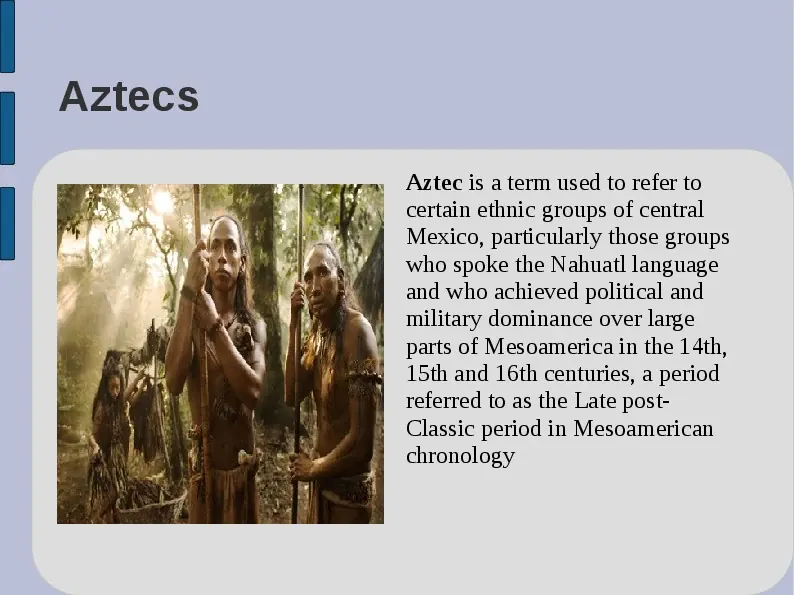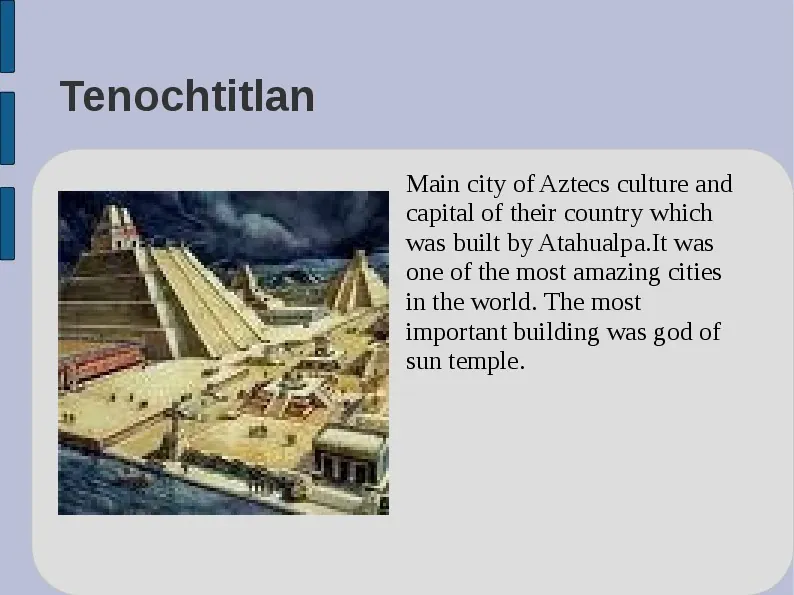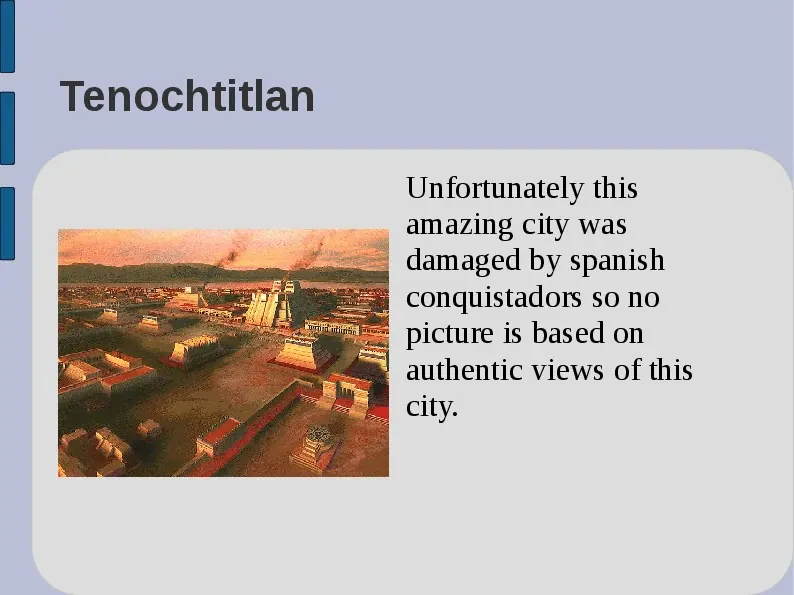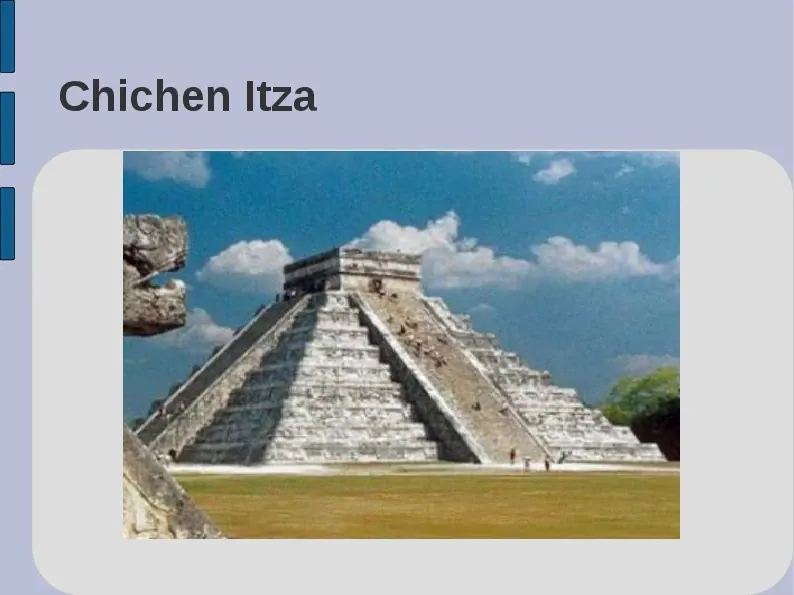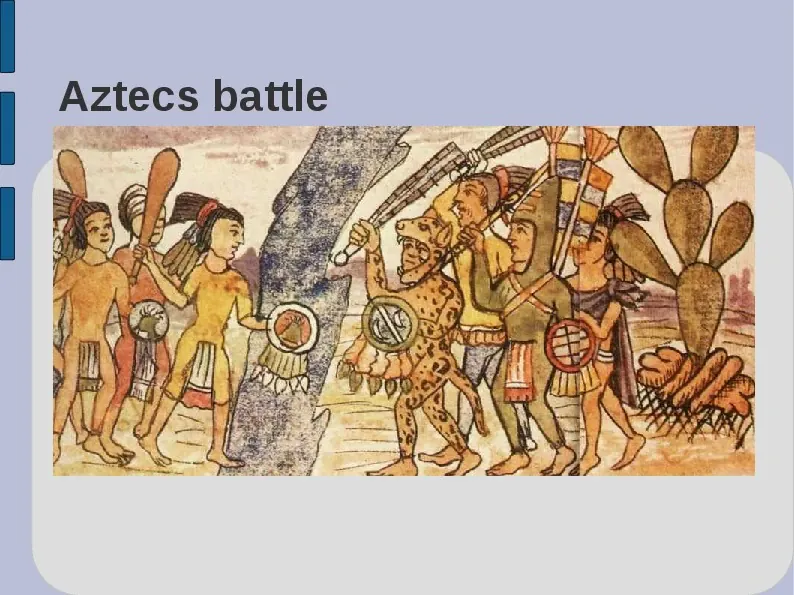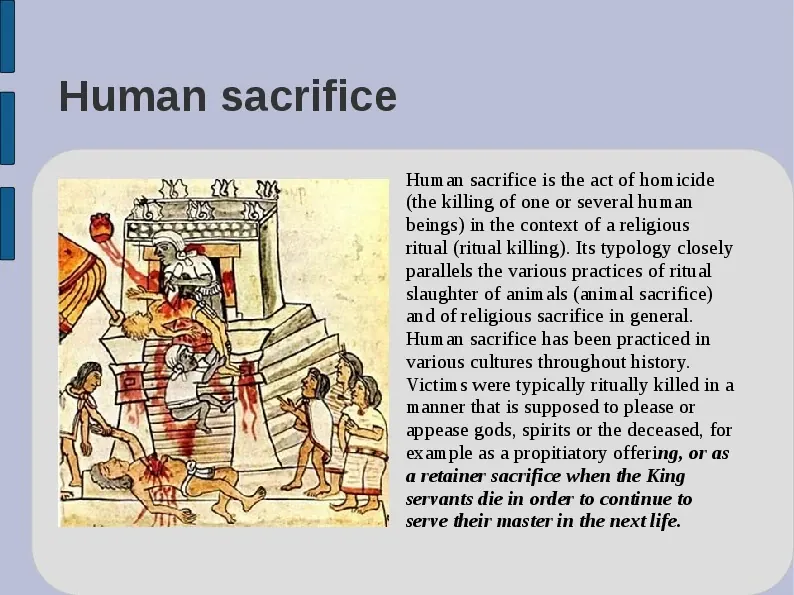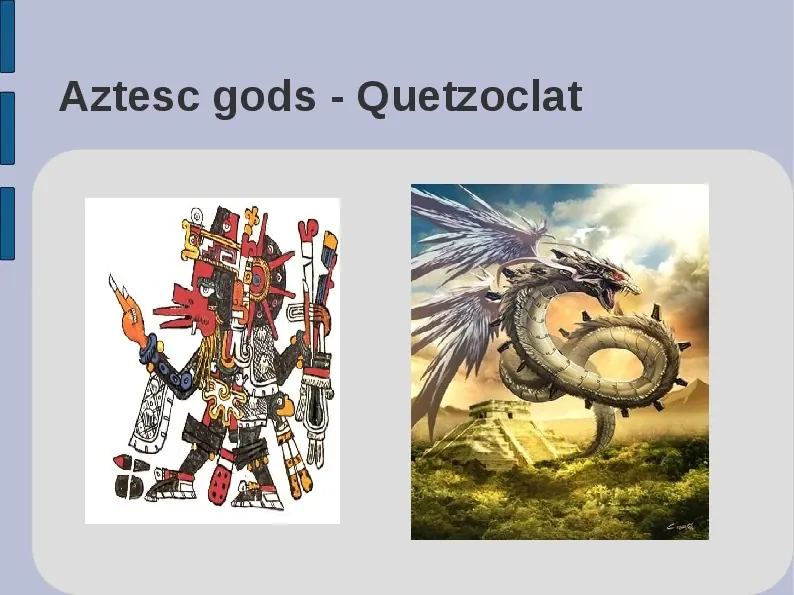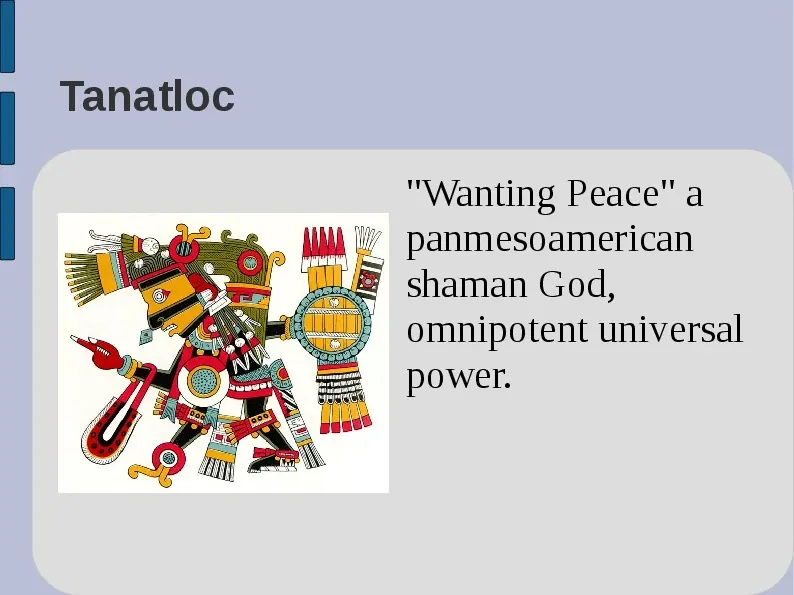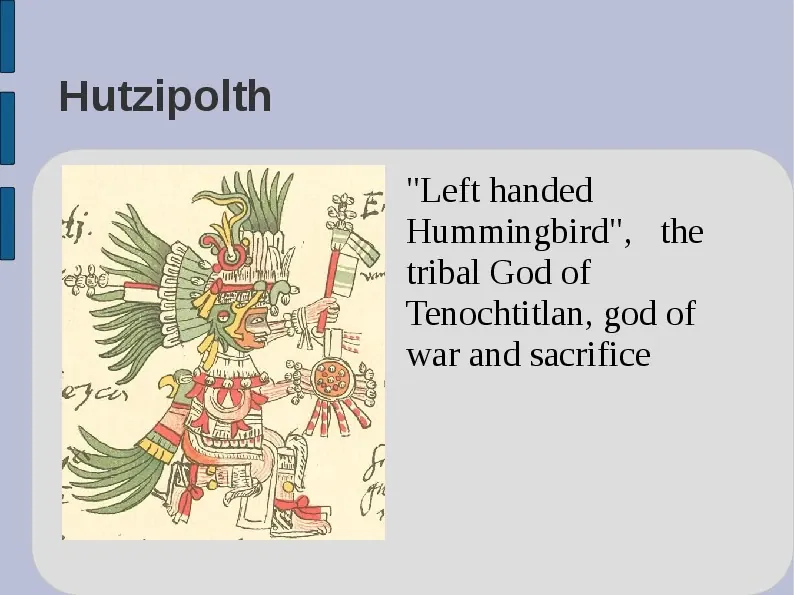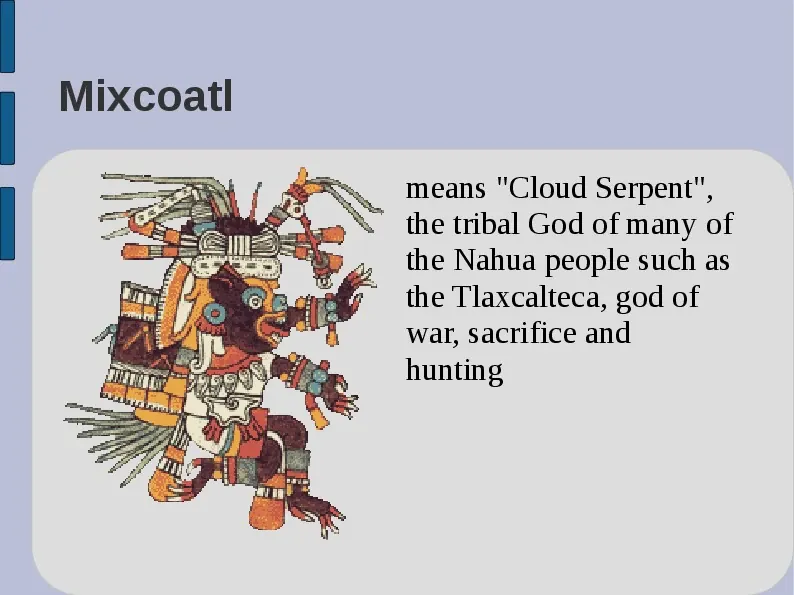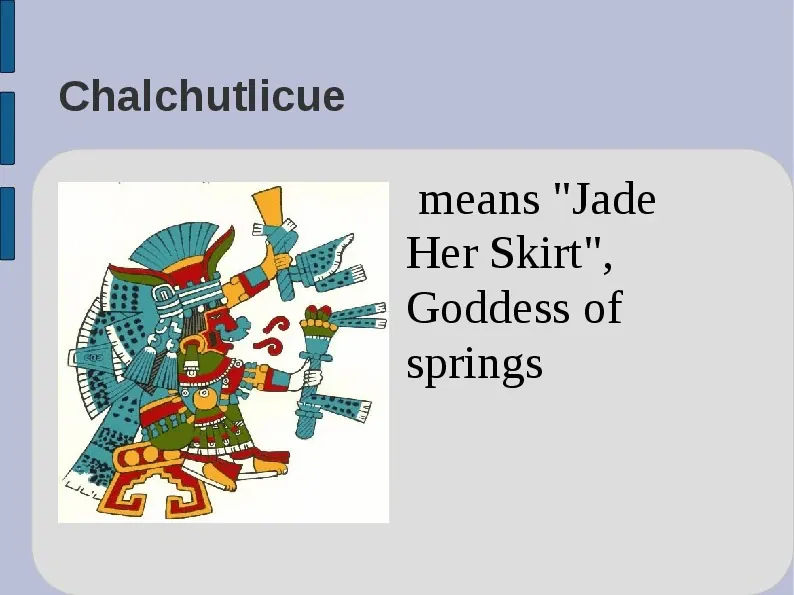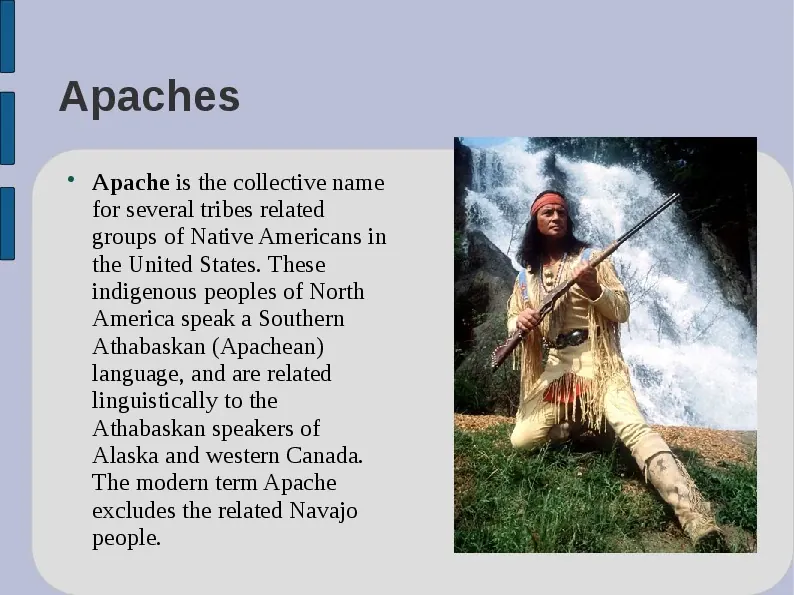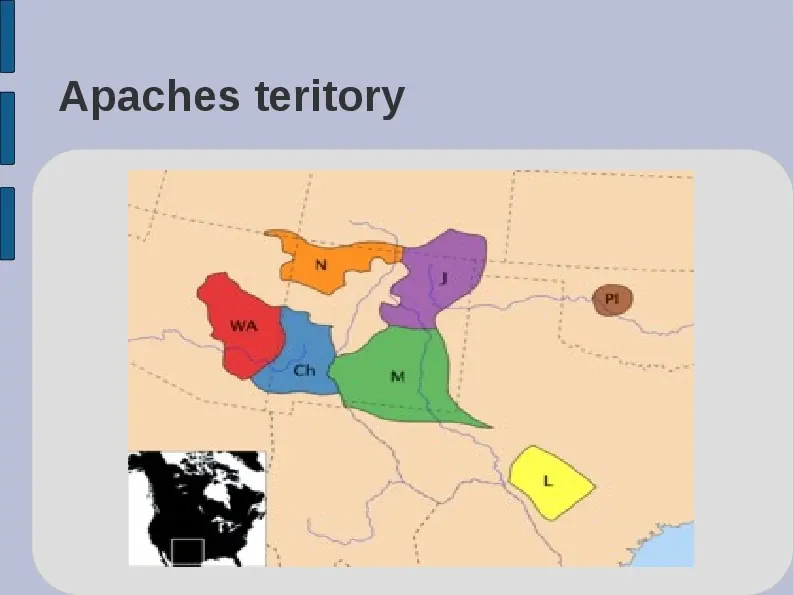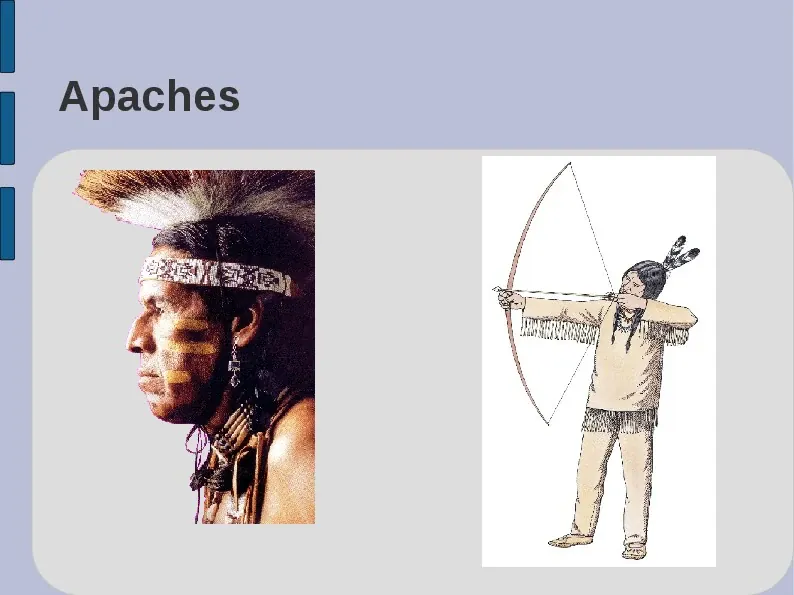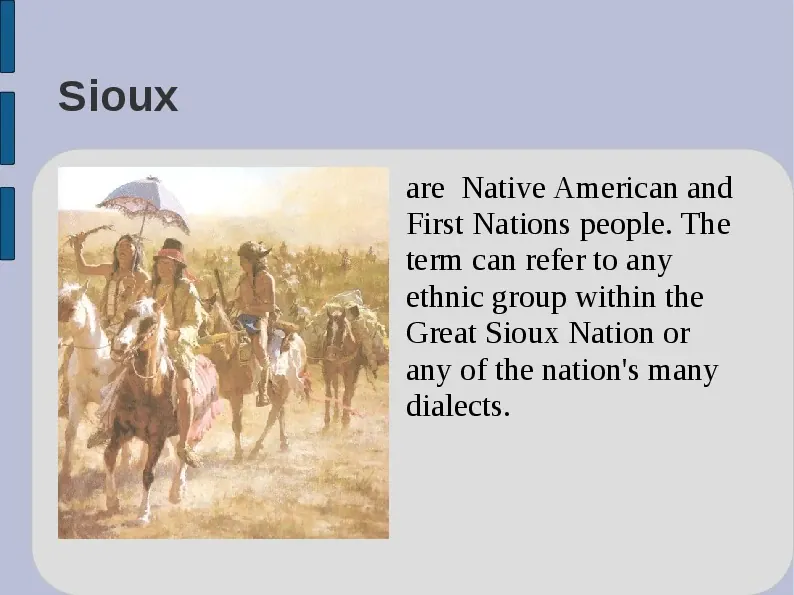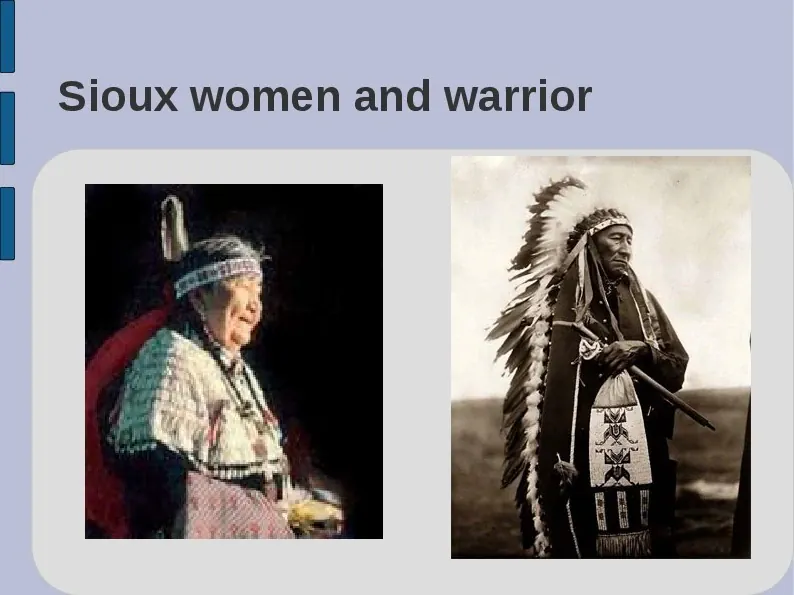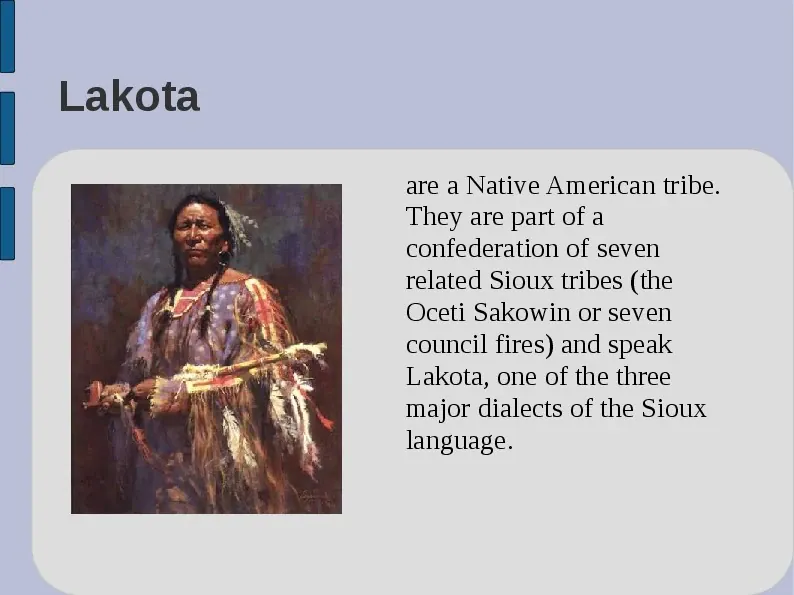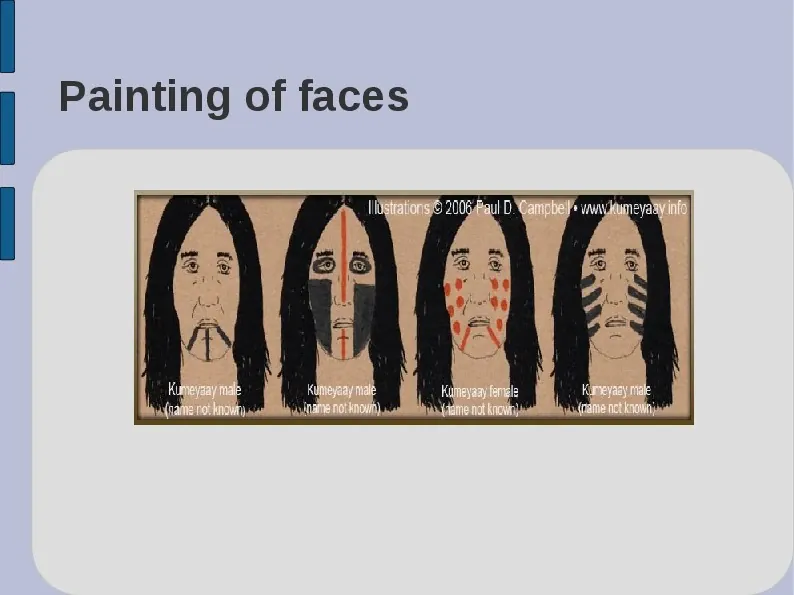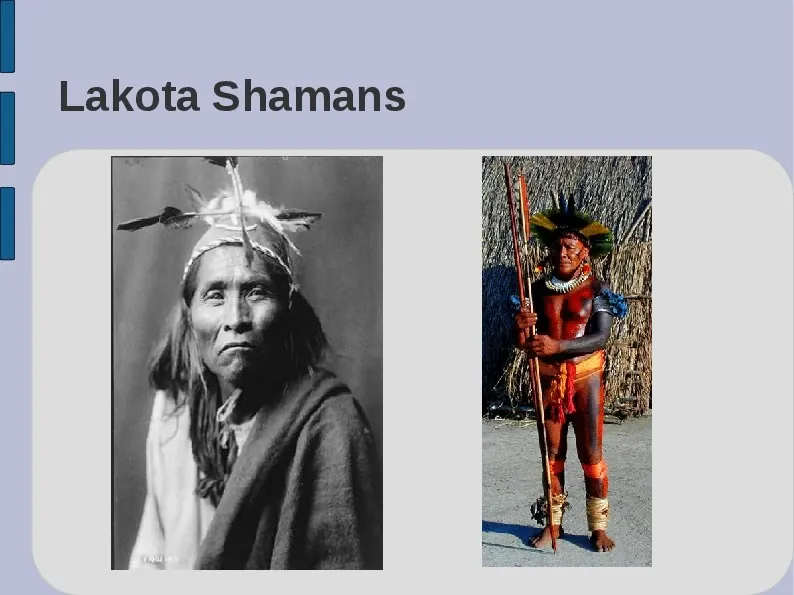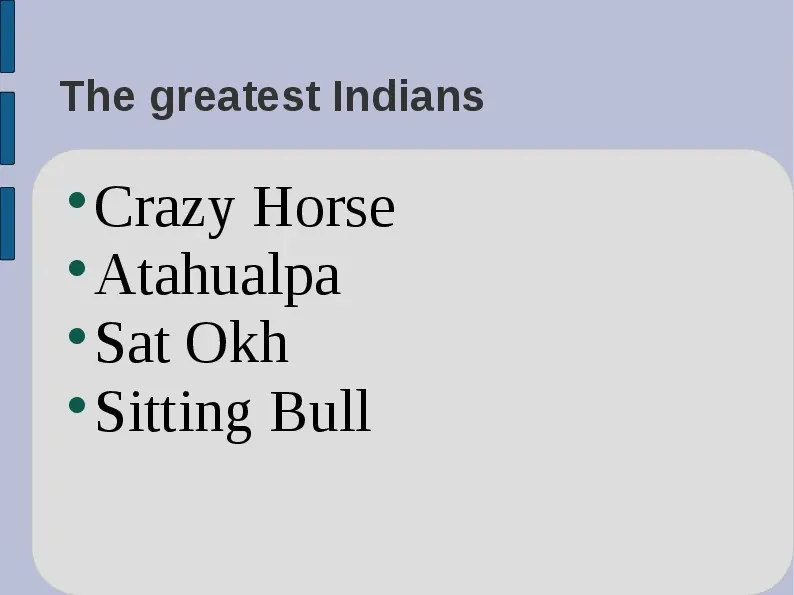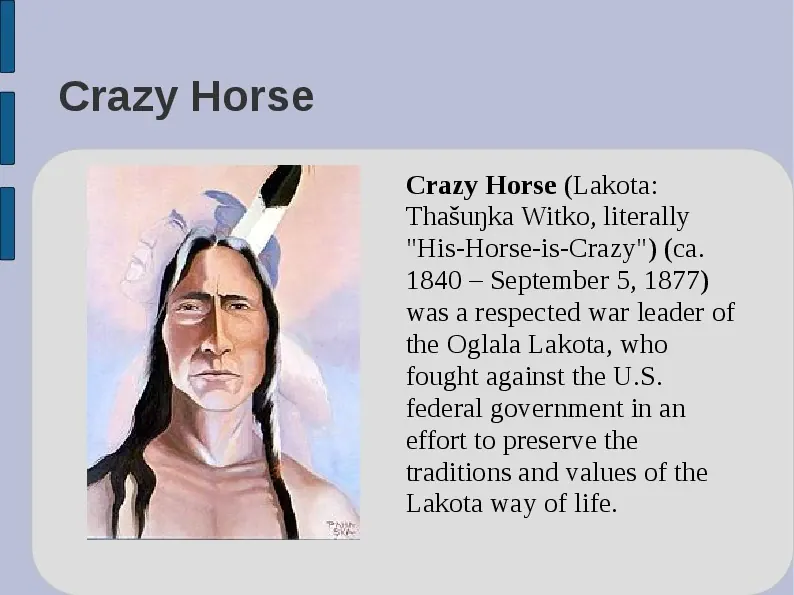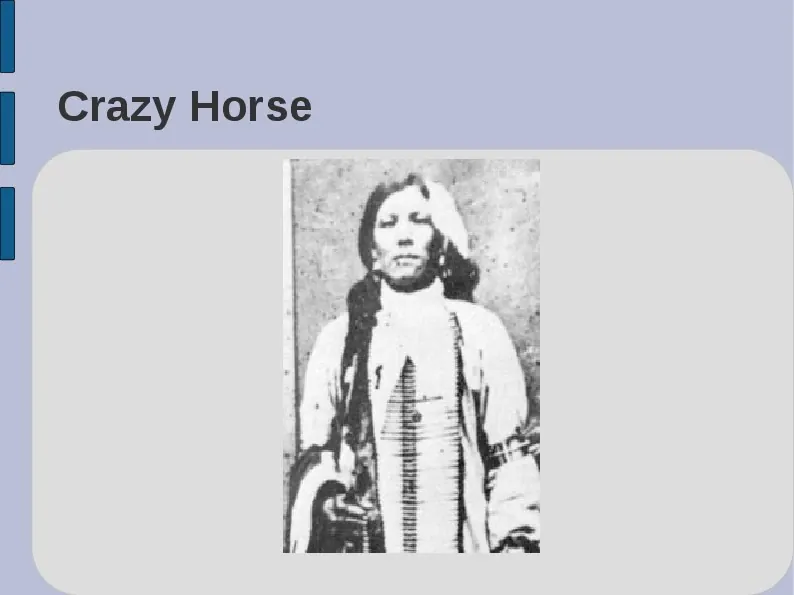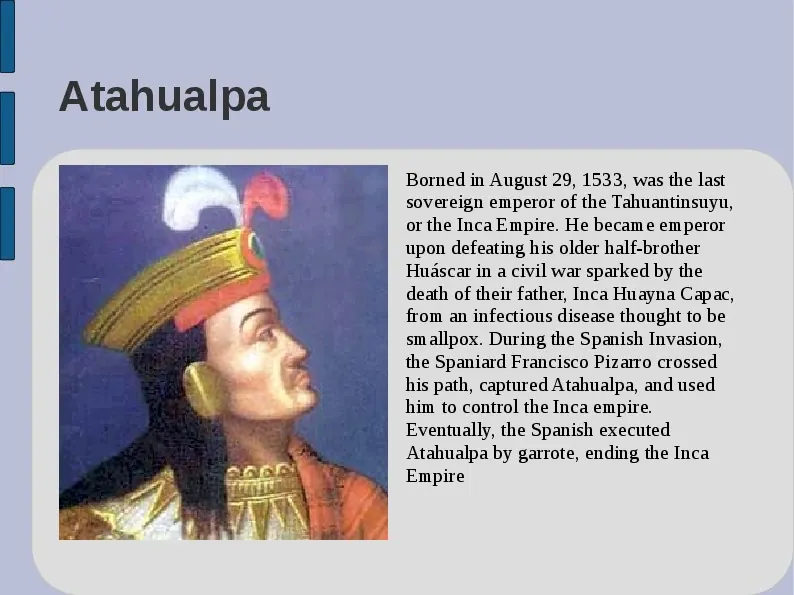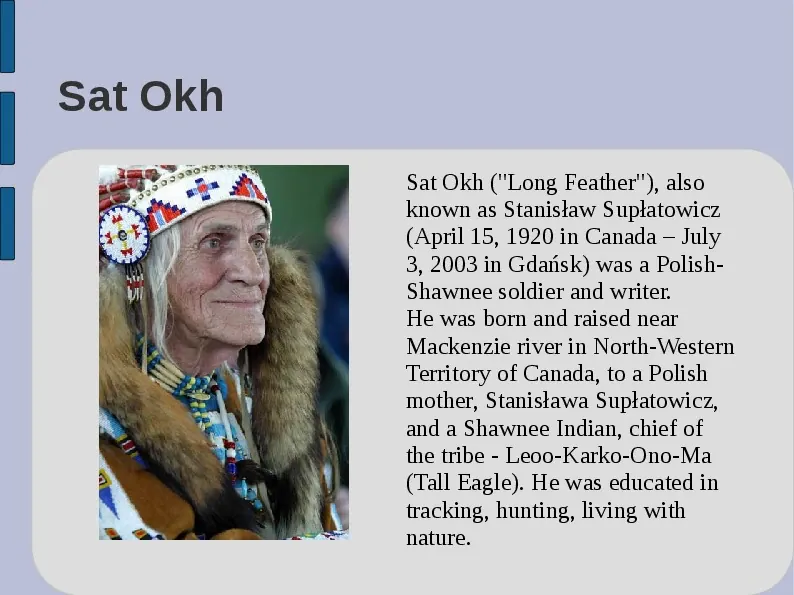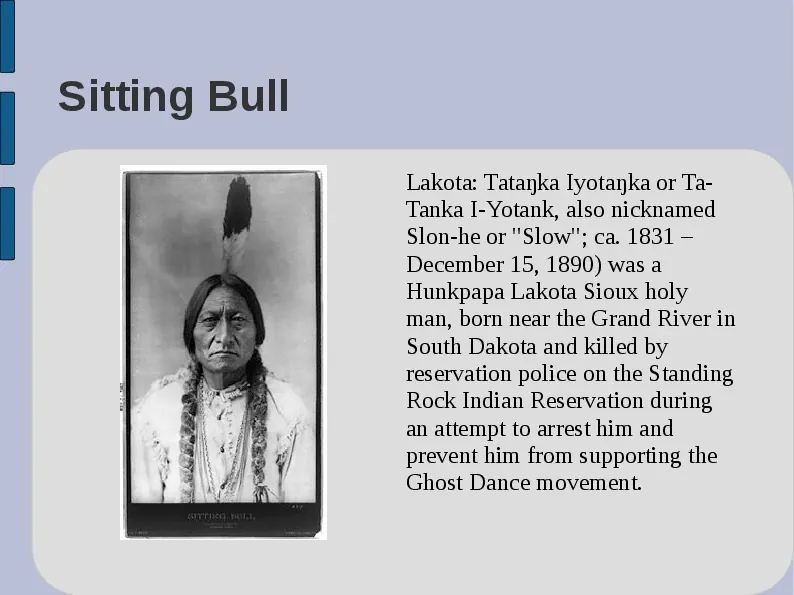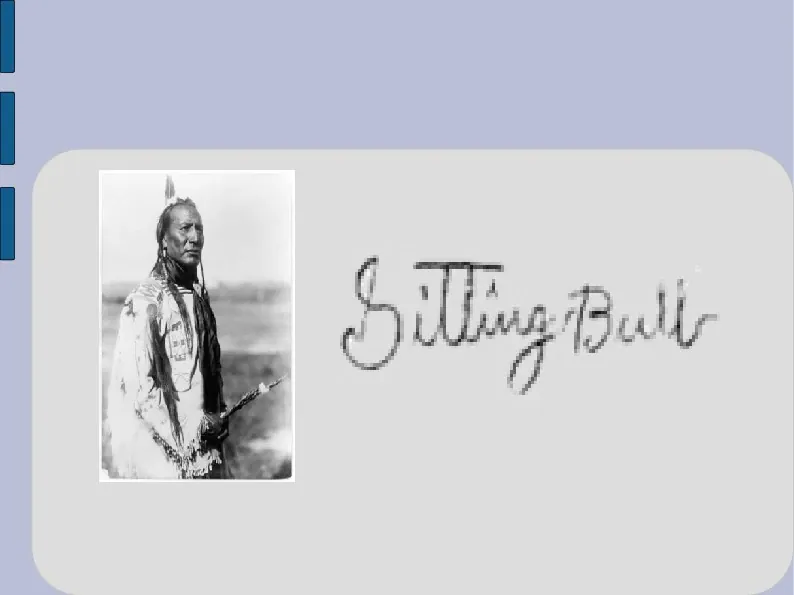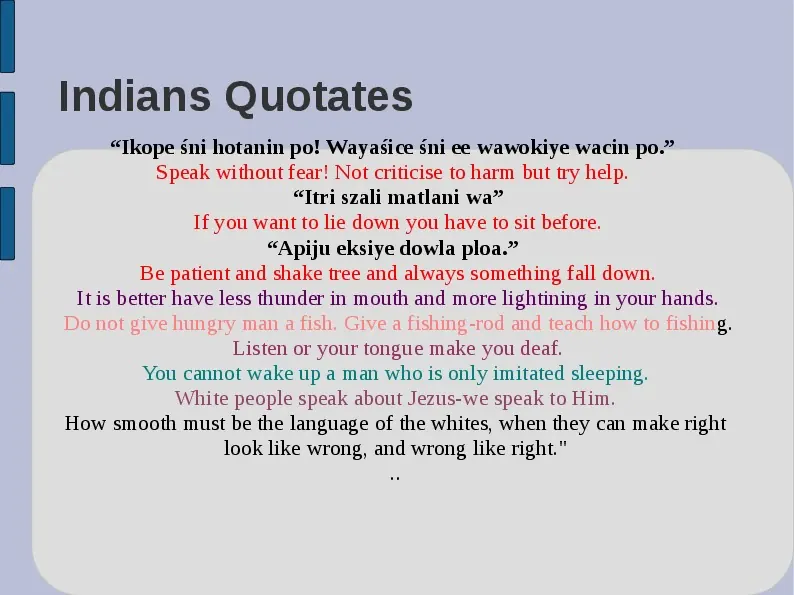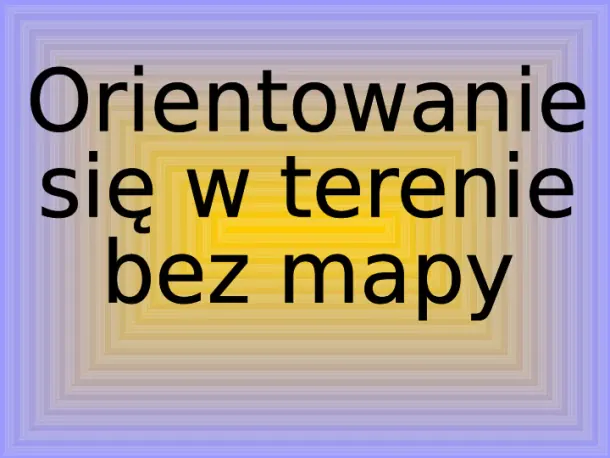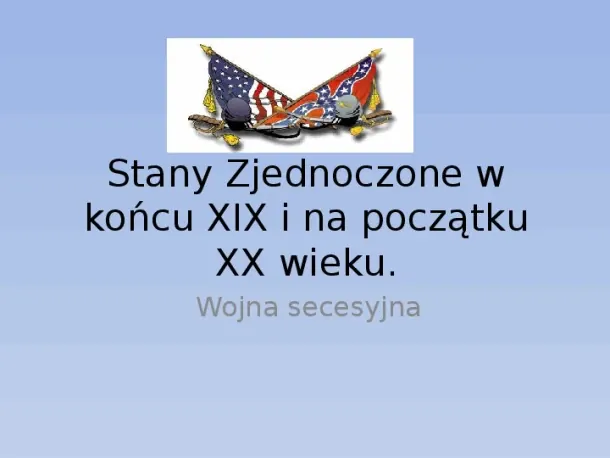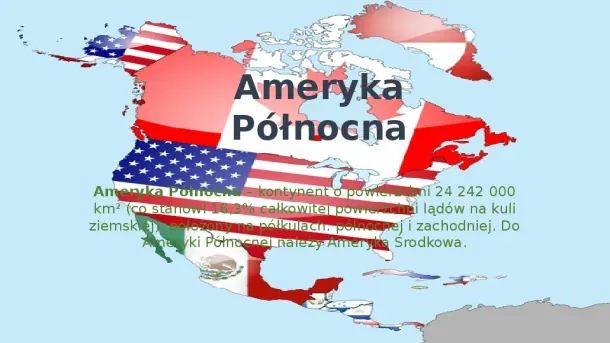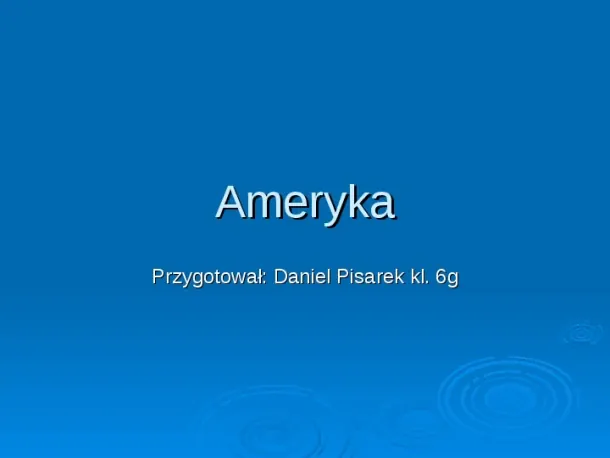Zobacz slidy
Treść prezentacji
Slide 1
American Indians
Slide 2
Name The name Indians has been given by Krzysztof Kolumb, who thought, that floated to India. In different countries and environments are olso used another name of Indians for example in Canada there are called Aboriginal Peoples or aborigines ( people primary ) , in USA is often used name Native Americans as well as First Americans.
Slide 3
Main languages
Slide 4
Algonquian language Algonquian language is closely related to the Anishinaabe language or a particularly divergent Anishinaabe dialect. It is spoken, alongside French and to some extent English, by the Algonquin First Nations of Quebec and Ontario.
Slide 5
Na-dene language Is a proposed Native American language family which includes the Athabaskan languages, Eyak, Tlingit, and possibly Haida. The connection of Haida to the other languages is controversial.
Slide 6
Salishan language Languages are a group of languages of the Pacific Northwest (the Canadian province of British Columbia and the American states of Washington, Oregon, Idaho and Montana). They are characterised by agglutinativity and astonishing consonant clusters
Slide 7
Words in Dakota language
Slide 8
Indian
Slide 9
Pipes of peace A peace pipe, also called a calumet or medicine pipe, is a ceremonial smoking pipe used by many Native American tribes, traditionally as a token of peace. A type of herbal tobacco or mixture of herbs was usually reserved for special smoking occasions, with each regions people using the plants that were locally considered to have special qualities or a culturally condoned basis for ceremonial
Slide 10
Indians writing An independent origin and development of writing is counted among the many achievements and innovations of preColumbian American cultures. The region of Mesoamerica produced a number of indigenous writing systems from the 1st millennium BCE onwards. What may be the earliest-known example in the Americas of an extensive text thought to be writing is by the Cascajal Block. The Olmec hieroglyphs tablet has been indirectly dated from ceramic shards found in the same context to approximately 900 BCE, around the time that Olmec occupation of San Lorenzo began to wane.
Slide 11
Maias calendar It is a primal calendar earlier than any european calendar. It is ending in 2012 year so a lot of scientist thought that it will be the end of World. It is also work of art showing maiasbelieves.
Slide 12
Indians warriors and martial art Indians were pacefull people but they had to sometimes fight. The main reasons of war were: -they want to protect their lands -show their power human sacrifing Often used tactics of subsidiary war, was attacked from concealments. In fights, but certain part played tactics, especially esteemed former individual skills and courage. In fight as important as victory, was honourable death.
Slide 13
Indians weapons Weapons Of Indians before arrival Of Europeans was enough poor - consisted usually from bow and arrows, or knives ( stone or copper), hatchets ( tomahawks) and of spears. From regard on lack effective centres of communication( with exception of boat) warriors were planning to go on war with little charge, beginning from oneself only weapons. One used tactics of subsidiary war, one attacked from concealments.
Slide 14
The most important tribes: Aztecs Apaches Sioux Lakota Komanches Blackfeet Chejens Nawaho
Slide 15
Aztecs Aztec is a term used to refer to certain ethnic groups of central Mexico, particularly those groups who spoke the Nahuatl language and who achieved political and military dominance over large parts of Mesoamerica in the 14th, 15th and 16th centuries, a period referred to as the Late postClassic period in Mesoamerican chronology
Slide 16
Tenochtitlan Main city of Aztecs culture and capital of their country which was built by Atahualpa.It was one of the most amazing cities in the world. The most important building was god of sun temple.
Slide 17
Tenochtitlan Unfortunately this amazing city was damaged by spanish conquistadors so no picture is based on authentic views of this city.
Slide 18
Chichen Itza
Slide 19
Aztecs battle
Slide 20
Human sacrifice Human sacrifice is the act of homicide (the killing of one or several human beings) in the context of a religious ritual (ritual killing). Its typology closely parallels the various practices of ritual slaughter of animals (animal sacrifice) and of religious sacrifice in general. Human sacrifice has been practiced in various cultures throughout history. Victims were typically ritually killed in a manner that is supposed to please or appease gods, spirits or the deceased, for example as a propitiatory offering, or as a retainer sacrifice when the King servants die in order to continue to serve their master in the next life.
Slide 21
Aztesc gods - Quetzoclat
Slide 22
Tanatloc Wanting Peace a panmesoamerican shaman God, omnipotent universal power.
Slide 23
Hutzipolth Left handed Hummingbird, the tribal God of Tenochtitlan, god of war and sacrifice
Slide 24
Mixcoatl means Cloud Serpent, the tribal God of many of the Nahua people such as the Tlaxcalteca, god of war, sacrifice and hunting
Slide 25
Chalchutlicue means Jade Her Skirt, Goddess of springs
Slide 26
Apaches Apache is the collective name for several tribes related groups of Native Americans in the United States. These indigenous peoples of North America speak a Southern Athabaskan (Apachean) language, and are related linguistically to the Athabaskan speakers of Alaska and western Canada. The modern term Apache excludes the related Navajo people.
Slide 27
Apaches teritory
Slide 28
Apaches
Slide 29
Sioux are Native American and First Nations people. The term can refer to any ethnic group within the Great Sioux Nation or any of the nations many dialects.
Slide 30
Sioux women and warrior
Slide 31
Lakota are a Native American tribe. They are part of a confederation of seven related Sioux tribes (the Oceti Sakowin or seven council fires) and speak Lakota, one of the three major dialects of the Sioux language.
Slide 32
Painting of faces
Slide 33
Lakota Shamans
Slide 34
The greatest Indians Crazy Horse Atahualpa Sat Okh Sitting Bull
Slide 35
Crazy Horse Crazy Horse (Lakota: Thašuŋka Witko, literally His-Horse-is-Crazy) (ca. 1840 September 5, 1877) was a respected war leader of the Oglala Lakota, who fought against the U.S. federal government in an effort to preserve the traditions and values of the Lakota way of life.
Slide 36
Crazy Horse
Slide 37
Atahualpa Borned in August 29, 1533, was the last sovereign emperor of the Tahuantinsuyu, or the Inca Empire. He became emperor upon defeating his older half-brother Huáscar in a civil war sparked by the death of their father, Inca Huayna Capac, from an infectious disease thought to be smallpox. During the Spanish Invasion, the Spaniard Francisco Pizarro crossed his path, captured Atahualpa, and used him to control the Inca empire. Eventually, the Spanish executed Atahualpa by garrote, ending the Inca Empire
Slide 38
Sat Okh Sat Okh (Long Feather), also known as Stanisław Supłatowicz (April 15, 1920 in Canada July 3, 2003 in Gdańsk) was a PolishShawnee soldier and writer. He was born and raised near Mackenzie river in North-Western Territory of Canada, to a Polish mother, Stanisława Supłatowicz, and a Shawnee Indian, chief of the tribe - Leoo-Karko-Ono-Ma (Tall Eagle). He was educated in tracking, hunting, living with nature.
Slide 39
Sitting Bull Lakota: Tataŋka Iyotaŋka or TaTanka I-Yotank, also nicknamed Slon-he or Slow; ca. 1831 December 15, 1890) was a Hunkpapa Lakota Sioux holy man, born near the Grand River in South Dakota and killed by reservation police on the Standing Rock Indian Reservation during an attempt to arrest him and prevent him from supporting the Ghost Dance movement.
Slide 41
Indians Quotates Ikope śni hotanin po! Wayaśice śni ee wawokiye wacin po. Speak without fear! Not criticise to harm but try help. Itri szali matlani wa If you want to lie down you have to sit before. Apiju eksiye dowla ploa. Be patient and shake tree and always something fall down. It is better have less thunder in mouth and more lightining in your hands. Do not give hungry man a fish. Give a fishing-rod and teach how to fishing. Listen or your tongue make you deaf. You cannot wake up a man who is only imitated sleeping. White people speak about Jezus-we speak to Him. How smooth must be the language of the whites, when they can make right look like wrong, and wrong like right. ..
Dane:
- Liczba slajdów: 41
- Rozmiar: 4.54 MB
- Ilość pobrań: 3397
- Ilość wyświetleń: 19943
